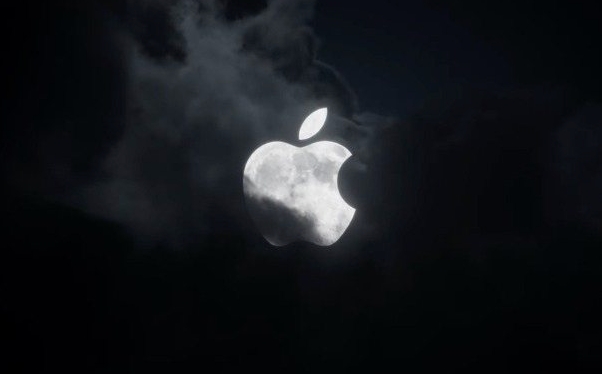For most people, 256GB of storage is enough for a MacBook, but it depends on usage. 1. macOS takes up 15–20GB, leaving around 220GB usable. 2. Light users like students or remote workers relying on cloud storage can manage well. 3. Heavy tasks like video editing or large software require more than 256GB. 4. Tips include using iCloud optimization, keeping downloads clean, and avoiding unnecessary heavy apps. 5. Future-proofing with 512GB is recommended if affordable.

For most people, 256GB of storage is enough for a MacBook — but it really depends on how you use it. If you’re not dealing with large files like videos or high-res photos regularly, 256GB should work fine. But if you're someone who stores a lot locally, you might find yourself running out of space sooner than expected.

What Takes Up Space on a MacBook?
macOS itself takes up about 15–20GB right off the bat. Then there's your personal data: apps, documents, downloads, and system caches. A few big apps — like Adobe Creative Suite or Xcode — can easily eat up tens of GBs. And don’t forget: browsers like Chrome can quietly take up several GBs depending on how many tabs and extensions you use.

Also, macOS needs some free space to run smoothly — ideally at least 10–15% of total storage. That means on a 256GB drive, you really only have around 220GB usable, tops.
Who Can Get By Comfortably with 256GB
- Students and casual users: If you mostly browse the web, write papers, and stream media, 256GB is more than enough.
- Remote workers using cloud services: If you store files on Google Drive, iCloud, or Dropbox and just access them online, local storage doesn’t need to be huge.
- Light photo/video editors: If you edit mobile photos in Lightroom or iMovie clips once in a while but don't keep all original files on the Mac, this size works.
If any of these describe you, go ahead with 256GB — just keep an eye on your storage as you go.

When You’ll Need More Than 256GB
- You work with raw video footage or high-res photos regularly.
- You install large software packages (like game engines or CAD tools).
- You prefer to keep everything locally instead of relying on the cloud.
In those cases, jumping to 512GB makes more sense. Otherwise, you’ll end up needing an external SSD or constantly cleaning up files — which gets annoying fast.
A few things that help:
- Use “Optimize Mac Storage” in iCloud to offload older files automatically.
- Keep your Downloads folder clean — it’s a common storage black hole.
- Avoid installing too many heavy apps unless you really need them.
It’s Not Just About Space — Think Long-Term
One thing a lot of people don’t consider is future-proofing. What feels plenty now might feel tight in a year or two, especially as file sizes grow and apps get heavier. If you can afford the upgrade to 512GB when buying, it’s often worth it for peace of mind.
But again, for average use, 256GB works — just don’t treat it like infinite space. Keep an eye on what’s taking up room, and manage it regularly.
Basically, it’s doable — but not a ton of wiggle room.
The above is the detailed content of Is 256GB storage enough for a MacBook?. For more information, please follow other related articles on the PHP Chinese website!

Hot AI Tools

Undress AI Tool
Undress images for free

Undresser.AI Undress
AI-powered app for creating realistic nude photos

AI Clothes Remover
Online AI tool for removing clothes from photos.

Clothoff.io
AI clothes remover

Video Face Swap
Swap faces in any video effortlessly with our completely free AI face swap tool!

Hot Article

Hot Tools

Notepad++7.3.1
Easy-to-use and free code editor

SublimeText3 Chinese version
Chinese version, very easy to use

Zend Studio 13.0.1
Powerful PHP integrated development environment

Dreamweaver CS6
Visual web development tools

SublimeText3 Mac version
God-level code editing software (SublimeText3)
 How to Remove Old Devices from Apple ID on Mac
Jul 07, 2025 am 09:08 AM
How to Remove Old Devices from Apple ID on Mac
Jul 07, 2025 am 09:08 AM
If you've owned multiple Apple devices over the years, you might find yourself in a situation where some of those older Macs, iPhones, iPads, or other Apple hardware have been sold, given away, or traded. No matter how they left your possession, it's
 How to Play Fortnite on Mac with FnMacAssistant & Sideloadly
Jul 05, 2025 am 09:21 AM
How to Play Fortnite on Mac with FnMacAssistant & Sideloadly
Jul 05, 2025 am 09:21 AM
Fortnite is once again available for iPhone and iPad users, bringing joy to many gamers. However, there's still no official version for Mac (at least not yet). Despite that, Apple Silicon Mac owners aren’t completely out of luck—you can run the iOS/i
 How to Enable iCloud Private Relay on Mac
Jul 05, 2025 am 09:36 AM
How to Enable iCloud Private Relay on Mac
Jul 05, 2025 am 09:36 AM
iCloud Private Relay is an excellent privacy feature included with the iCloud subscription, designed to safeguard your online activity and browsing by masking your IP address (using a temporary one) and encrypting DNS lookups. This prevents third pa
 How to Make MacOS Sequoia Feel Faster: Tips to Speed Up Slow MacOS
Jul 05, 2025 am 09:28 AM
How to Make MacOS Sequoia Feel Faster: Tips to Speed Up Slow MacOS
Jul 05, 2025 am 09:28 AM
macOS Sequoia is a solid operating system that brings some impressive features like iPhone Mirroring, and while performance is excellent for many users, not everyone experiences the same level of speed. If you're finding macOS Sequoia slower than pre
 How to See All Links Shared in Messages on iPhone & iPad
Jul 05, 2025 am 09:31 AM
How to See All Links Shared in Messages on iPhone & iPad
Jul 05, 2025 am 09:31 AM
If you frequently use iMessage, then you've likely shared numerous web links in your chats — maybe an article, a video, a tweet, a song, or anything else. Locating these links later can be quite frustrating, but thankfully there's a simpler method th
 Create a MacOS Tahoe 26 Beta VM with Three Commands in Terminal Using tart
Jul 06, 2025 am 09:28 AM
Create a MacOS Tahoe 26 Beta VM with Three Commands in Terminal Using tart
Jul 06, 2025 am 09:28 AM
Advanced Mac users familiar with the command line can swiftly set up a MacOS Tahoe 26 beta virtual machine by entering a few commands into Terminal, using tart. Tart is a command-line utility for managing virtual machines and offers one of the quicke
 WindowServer Quit Unexpectedly: How to Fix It on Mac Air/Pro?
Jul 05, 2025 am 09:17 AM
WindowServer Quit Unexpectedly: How to Fix It on Mac Air/Pro?
Jul 05, 2025 am 09:17 AM
What is WindowServer and why is it importantWindowServer is a core macOS process that manages how apps and windows appear on screen. It handles GUI rendering, controls internal and external displays, and enables all vis
 iOS 15.3 Beta 2 & iPadOS 15.3 Beta 2 Released for Testing
Jul 06, 2025 am 09:25 AM
iOS 15.3 Beta 2 & iPadOS 15.3 Beta 2 Released for Testing
Jul 06, 2025 am 09:25 AM
While Apple has just made iOS 15.2.1 and iPadOS 15.2.1 available to all users, they have also rolled out the second beta of iOS 15.3 and iPadOS 15.3 for those participating in Apple's beta testing programs for mobile operating systems.In addition, ne






